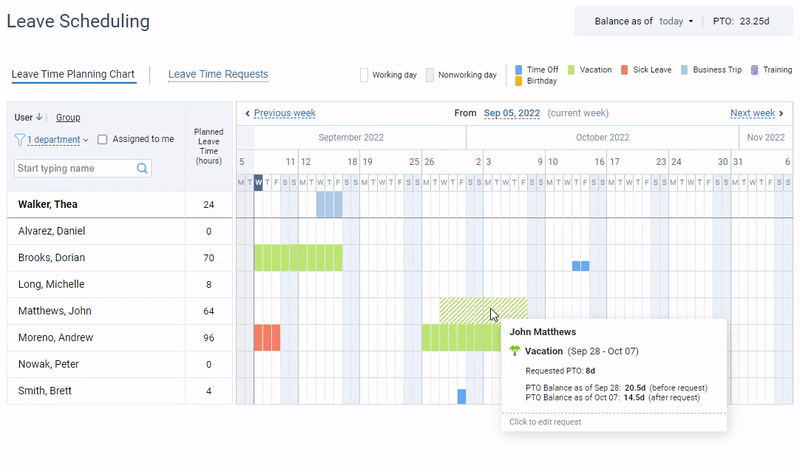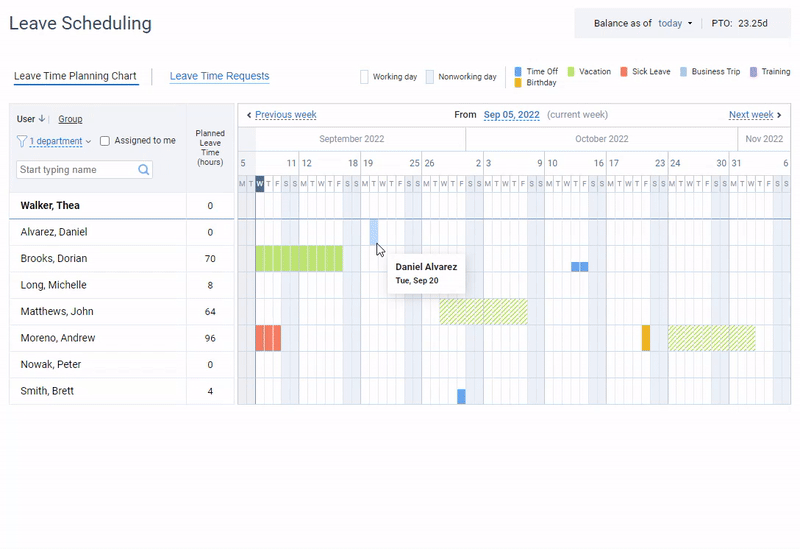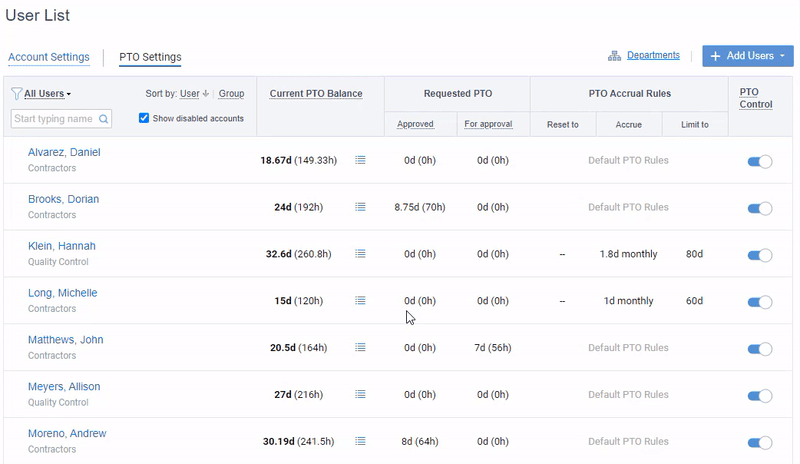Paid time off procedures vary according to state and company regulations. The only thing that is true in any case is that PTO is the time when an employee is not working but is still getting paid their typical rate either fully or partially. Types of paid leaves, the accrual rules, request procedure – these PTO management details should be neatly documented in every company.
To avoid leave-related quarrels and misunderstandings, HR teams should compile and distribute PTO request policies where they define the procedures of asking for and granting time off. This article is going to highlight key points of any time-off request policy that will streamline leave management processes in your company.
Things to Define in Your PTO Request Policy
When it comes to time off policies, there’s no simple and one-size-fits-all solution. Every policy should be adjusted according to the unique demands and strategies of a particular business. Below, we offer the key points that you need to define in your PTO policy to make it work.
How Far in Advance Requests Must be Submitted
First of all, you need to define how much notice your employees should give. This can vary depending on the type of business, type of absence (e.g., sick leave or vacation), the time of year and more. If your employee needs a sick leave, you need to allow for the same-day request while demanding a greater notice if multiple days in a row should be taken off.
Or you could set a date each week, a few weeks or a month after which PTO requests won’t be accepted. Let’s say, as a project manager, you distribute the workload across your team every Monday and you wouldn’t like it if some employees asked for some time off in the middle of the week. In this case, you should require that all requests for the next week be submitted by Friday.
How Often Employees Can Request Time Off
Next, your employees should be made aware of how often they can request time off.
Let’s say, some of your employees prefer to take a few days off every month rather than take a vacation every half a year – would you allow that? Or if you are okay with that, you’d like to limit time-off requests throughout the year to six time-off periods of any duration? Whatever rules might be working best for your business, you need to define them in your PTO policy, communicate them to your employees in advance and keep these rules consistent for all employees.
Instances When PTO Requests Won’t be Granted
Unfortunately, not all time-off requests can be granted. Once you have managed the basics, you need to define cases when time-off requests are likely to be declined.
For example, you may have employees who have accrued enough PTO days to take a 3-week vacation. But such long absences can be hard on the company, especially if it’s a small business. In this case, you may want to put a cap on the growth of PTO banks or limit the duration of absences.
Or if you have a new hire and they accrued a few PTO days after a few weeks of work – would you allow them to use their balance? Would you enable probationary employees to request paid absences at all?
Ways to Handle Overlapping Requests
Employees want to spend festive holidays or summer vacations with their friends and family, which often causes overlapping requests. In cases like these, managers have to juggle the competing interests with care. To make these situations more predictable for employees and managers, you need to document in the PTO policy how overlapping requests are handled in your company.
Standard ways to prioritize requests are the following:
- First Come, First Served: First to request gets their time off. Although it is clear and transparent, it may not be applicable in all situations.
- Reason-Based: Weigh and prioritize the reasons for the time-off requests. Be careful not to be subjected to favoritism. Use it with great caution with other factors.
- Prior Request History: Those who have taken less time off get an advantage.
- Seniority-Based: Whoever has been at the company longer gets priority. It may not be the best option in cases of urgent and time-consuming tasks where junior staff won’t manage.

Leave management in actiPLANS – approve, modify or reject leave requests and leave comments
Tools for Managing PTO Requests
When the key points of your time-off policy are ready, you need to choose the means and tools to manage paid-time-off requests. What you should never allow here is verbal time-off requests. Always have a clear and transparent method for collecting requests, such as one of the following.

Leave management in actiPLANS – create an unlimited number of leave types, get your team to request and plan their time off and review employee availability
Emails & Corporate Chats
Some managers still prefer to use their corporate emails to deal with most work-related matters. If you are one of them, you may like the idea to set up email folders and use one of them to collect time-off requests. Instead of importing these requests into a separate leave management software, you can manage absences this old-school way right from your email app.
The next-level leave management is using corporate chats. Did you know that the modern market offers leave and attendance tracking solutions even for Slack? Now you know that you can use messengers to send, collect and manage time-off requests.
Paper & Online PTO Request Forms
Paper forms and applications for time-off requests are even more old-school than emails. But some companies still require employees to compile formal applications that further take several rounds of approvals and could take weeks to manage.
A good alternative to paper forms is online forms like Google Forms, which is completely free-to-use. There, you may want to ask the same questions as in the case of a paper form: employee name, PTO dates and amounts, reasons for PTO request and other fields required according to your company’s policies.
Corporate Calendars
Another way to manage time off in your team is to use corporate online calendars.
In some companies, HR departments prefer to use Excel calendars to manage time off requests and share vacation schedules across the company. One of the biggest disadvantages of this tool is that managers need to update the sheets manually, which makes this method prone to human error. But if you think that it covers your needs, you may want to consider free Excel calendar templates.
Leave Management Software
Probably the most reliable tool for time off requests is leave management software. Usually, it offers the best features of the tool mentioned above – paid time off management, corporate calendar, automated PTO balance calculations, reports and integrations. Modern absence trackers also support mobile apps that allow you to request leaves and see who is absent today on the go.

PTO calculation settings in actiPLANS where you can specify custom accrual rules
Use The Right Tool to Keep Everything Organized
Leave management is tricky and you need to make sure to document basic rules and procedures to avoid misunderstanding with your employees. With paid-time-off policies, you can define request and approval procedures, which make leave-related hustle predictable and straightforward. To manage time off with confidence and avoid human errors, we advise to forget about paper applications and Excel spreadsheets, and implement absence management software that automates leave-related routines for HR teams, managers and employees.




